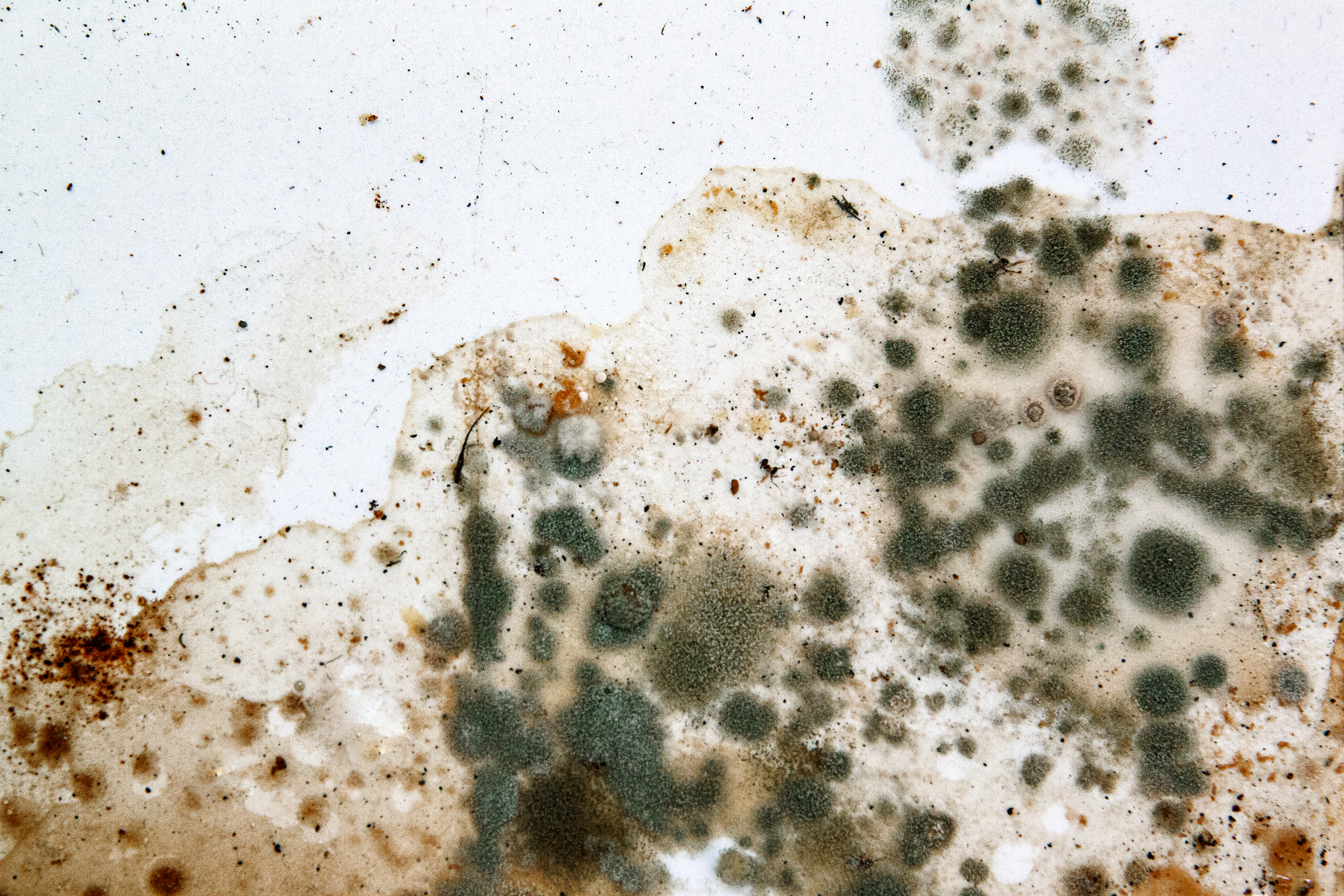Although mold particles are tiny, they pose a big problem. Mold is a type of microscopic fungi that can invade your home and expose you and your family to severe health risks. Mold spores (airborne mold) can present serious issues to those with allergies and asthma, and even create unpleasant side effects in otherwise healthy people. Since mold can grow in any moist environment, many people battle with mold in their homes. Often people experience health issues and discover too late that mold has been contributing to their problems.
What Causes Mold?
Tiny mold particles are an ever-present part of nature’s recycling system. Statistics from the Center for Disease Control (CDC) in Atlanta report that at least 1,000 species of mold are common in the United States.
Within a home, mold is usually found on walls, floors, ceilings, carpets, and fabrics exposed to moisture. Even in very clean homes, mold can flourish once it’s established. Unfortunately, once mold is present it tends to spread. Your best defense against mold is to prevent it in the first place, but that’s not always possible.
The terms mold and mildew are often used interchangeably, but the term “mold” is associated with the bumpy green, brown, or black films and fuzzy cultures that thrive on damp and dark surfaces, whereas “mildew” generally refers to the silver-gray, flat-lying mold species commonly seen as “powdery mildew” on plant leaves.
There are a few key elements that, when taken together, are likely to lead to the presence and eventual growth of mold:
- Mold spores
- Moisture
- Food source
- Oxygen supply
- Lack of sunlight
- Optimal temperatures
If any of these conditions are missing, then mold won’t be able to grow. That means removing one or more of these elements is crucial to eliminating a mold problem. Whenever possible, you should ensure these factors aren’t present in the first place in order to prevent mold.
Mold Problems
Mold is highly problematic for your health, and for that reason, it’s also problematic in homes and buildings. It’s become a big issue when trying to buy or sell property, and that’s because people (rightfully) fear the issues that mold can pose. In fact, in a bestselling book by recognized mold expert Vicki Lankarge, mold is called “the asbestos of the new millennium.”
Molds produce allergens, irritants, and in some cases, even potentially toxic substances. People’s sensitivity to mold varies. Inhaling or touching mold can create reactions in highly sensitive individuals. People exposed to mold commonly report hay fever-type symptoms, such as sneezing, runny nose, red eyes, and skin rash (dermatitis). According to the CDC, there is sufficient evidence to link indoor exposure to mold with upper respiratory tract symptoms, cough, and wheeze in otherwise healthy people; with asthma symptoms in people with asthma; and with hypersensitivity pneumonitis in individuals susceptible to that immune-mediated condition.
Furthermore, mold can be unsightly and odorous. People often say that what you can see is just the tip of the iceberg. Mold often grows behind walls which require removal to address. Looking for mold has become a standard part of inspections when it comes to buying property, which makes it important to watch for if you are buying or selling. The presence of mold can sink substantial real estate deals. This has made people even more cautious about preventing or removing mold.
Mold Prevention is the Best Defense
Remember how we said that mold spores must be present for mold to take hold and grow? The absolute best way to get rid of those mold spores is by using a high-quality air purifier. A True HEPA air purifier that meets strict standards of efficiency is a good start in the battle against mold.
That being said, your best protection is an even more advanced system. Most air purifiers capture up to 99.97% of pollutants down to 0.3 microns in size. Medify air purifiers remove 99.9% of particles down to 0.1 microns - removing even the tiniest particles that most air purifiers miss. Medify Air Purifiers use True HEPA H13 filters with three levels of filtration to catch and remove not only mold but allergens, pet dander, and more. Place an air purifier in places prone to mold: basements, bathrooms, kitchens, and rooms with upholstered furniture. Don’t forget to replace your filters as needed, too.
Contact us to learn how you can improve your air quality and protect your home - and health - against mold.


